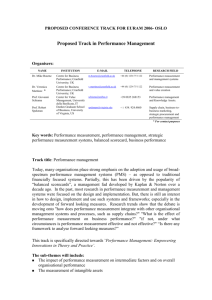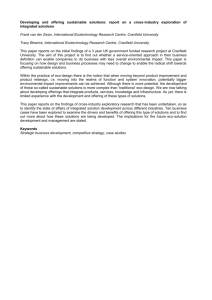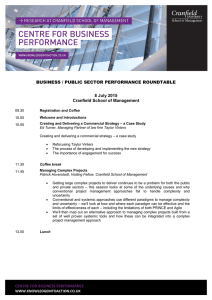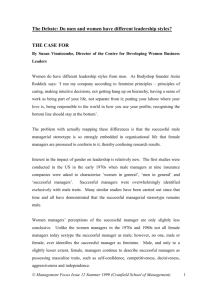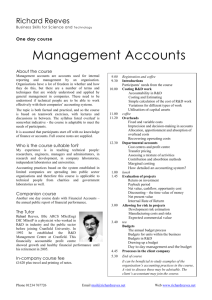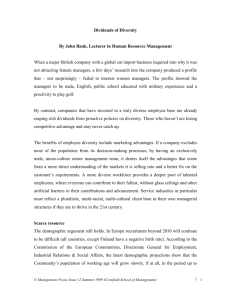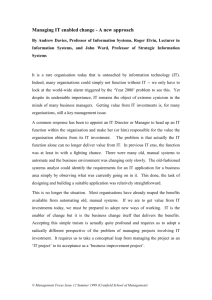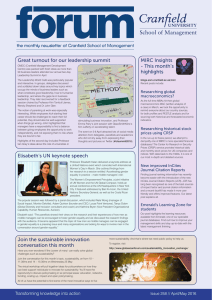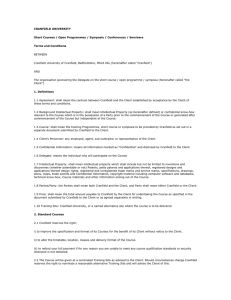Stereoscopic PIV analysis of an oscillating piezoelectric unimorph Simon J.Croucher
advertisement
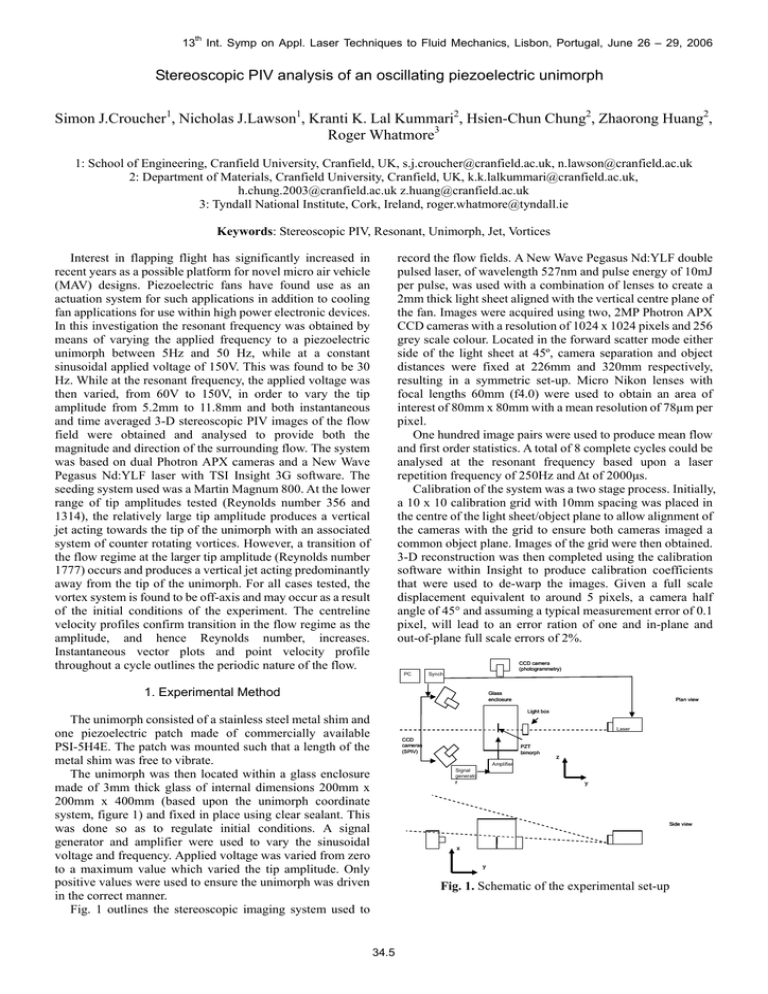
13th Int. Symp on Appl. Laser Techniques to Fluid Mechanics, Lisbon, Portugal, June 26 – 29, 2006 Stereoscopic PIV analysis of an oscillating piezoelectric unimorph Simon J.Croucher1, Nicholas J.Lawson1, Kranti K. Lal Kummari2, Hsien-Chun Chung2, Zhaorong Huang2, Roger Whatmore3 1: School of Engineering, Cranfield University, Cranfield, UK, s.j.croucher@cranfield.ac.uk, n.lawson@cranfield.ac.uk 2: Department of Materials, Cranfield University, Cranfield, UK, k.k.lalkummari@cranfield.ac.uk, h.chung.2003@cranfield.ac.uk z.huang@cranfield.ac.uk 3: Tyndall National Institute, Cork, Ireland, roger.whatmore@tyndall.ie Keywords: Stereoscopic PIV, Resonant, Unimorph, Jet, Vortices record the flow fields. A New Wave Pegasus Nd:YLF double pulsed laser, of wavelength 527nm and pulse energy of 10mJ per pulse, was used with a combination of lenses to create a 2mm thick light sheet aligned with the vertical centre plane of the fan. Images were acquired using two, 2MP Photron APX CCD cameras with a resolution of 1024 x 1024 pixels and 256 grey scale colour. Located in the forward scatter mode either side of the light sheet at 45º, camera separation and object distances were fixed at 226mm and 320mm respectively, resulting in a symmetric set-up. Micro Nikon lenses with focal lengths 60mm (f4.0) were used to obtain an area of interest of 80mm x 80mm with a mean resolution of 78µm per pixel. One hundred image pairs were used to produce mean flow and first order statistics. A total of 8 complete cycles could be analysed at the resonant frequency based upon a laser repetition frequency of 250Hz and Δt of 2000μs. Calibration of the system was a two stage process. Initially, a 10 x 10 calibration grid with 10mm spacing was placed in the centre of the light sheet/object plane to allow alignment of the cameras with the grid to ensure both cameras imaged a common object plane. Images of the grid were then obtained. 3-D reconstruction was then completed using the calibration software within Insight to produce calibration coefficients that were used to de-warp the images. Given a full scale displacement equivalent to around 5 pixels, a camera half angle of 45° and assuming a typical measurement error of 0.1 pixel, will lead to an error ration of one and in-plane and out-of-plane full scale errors of 2%. Interest in flapping flight has significantly increased in recent years as a possible platform for novel micro air vehicle (MAV) designs. Piezoelectric fans have found use as an actuation system for such applications in addition to cooling fan applications for use within high power electronic devices. In this investigation the resonant frequency was obtained by means of varying the applied frequency to a piezoelectric unimorph between 5Hz and 50 Hz, while at a constant sinusoidal applied voltage of 150V. This was found to be 30 Hz. While at the resonant frequency, the applied voltage was then varied, from 60V to 150V, in order to vary the tip amplitude from 5.2mm to 11.8mm and both instantaneous and time averaged 3-D stereoscopic PIV images of the flow field were obtained and analysed to provide both the magnitude and direction of the surrounding flow. The system was based on dual Photron APX cameras and a New Wave Pegasus Nd:YLF laser with TSI Insight 3G software. The seeding system used was a Martin Magnum 800. At the lower range of tip amplitudes tested (Reynolds number 356 and 1314), the relatively large tip amplitude produces a vertical jet acting towards the tip of the unimorph with an associated system of counter rotating vortices. However, a transition of the flow regime at the larger tip amplitude (Reynolds number 1777) occurs and produces a vertical jet acting predominantly away from the tip of the unimorph. For all cases tested, the vortex system is found to be off-axis and may occur as a result of the initial conditions of the experiment. The centreline velocity profiles confirm transition in the flow regime as the amplitude, and hence Reynolds number, increases. Instantaneous vector plots and point velocity profile throughout a cycle outlines the periodic nature of the flow. PC CCD camera (photogrammetry) Synch 1. Experimental Method Glass enclosure Plan view Light box The unimorph consisted of a stainless steel metal shim and one piezoelectric patch made of commercially available PSI-5H4E. The patch was mounted such that a length of the metal shim was free to vibrate. The unimorph was then located within a glass enclosure made of 3mm thick glass of internal dimensions 200mm x 200mm x 400mm (based upon the unimorph coordinate system, figure 1) and fixed in place using clear sealant. This was done so as to regulate initial conditions. A signal generator and amplifier were used to vary the sinusoidal voltage and frequency. Applied voltage was varied from zero to a maximum value which varied the tip amplitude. Only positive values were used to ensure the unimorph was driven in the correct manner. Fig. 1 outlines the stereoscopic imaging system used to Laser CCD cameras (SPIV) PZT bimorph z Amplifier Signal generato r y Side view x y Fig. 1. Schematic of the experimental set-up 34.5

